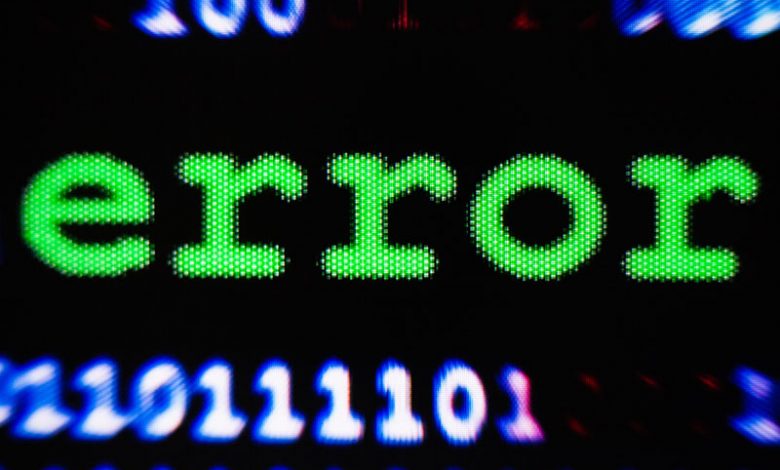
The 'Error Code - Site contains Malware' error is a warning message that internet users may encounter when accessing a specific website or web page. This error code suggests that the site users are trying to visit contains potentially dangerous malware that could harm their computer, steal personal information, or damage their user experience. It is triggered by web browsers' built-in security measures to protect users from security threats.
The error code regarding a site containing malware is a safety feature common browsers like Chrome, Firefox, or Edge implement. The error avers that the site you're attempting to visit hosts malware - malicious software designed to infiltrate, damage or turn off computers or computer systems without the owner's consent. The error's origin lies within the browsers' algorithms and their recognition of potentially harmful code, scripts, or files on the web page.
Table of Contents
The Role of Adware-type Apps
Adware-type applications are common culprits behind the 'Error Code - site contains Malware' message. These apps often display intrusive ads, leading to misleading or harmful websites. They might inject code into web pages, causing your browser to believe the site to be dangerous. That is one way how you might see this error code. It's important to uninstall any adware or PUPs (Potentially Unwanted Programs) to mitigate this risk.
Potentially unwanted programs (PUPs) share many similarities. They are often designed to appear as legitimate software or accompany other software installations. PUPs can impact the user experience by slowing down systems, displaying intrusive ads, and triggering errors such as the 'Site you are visiting contains Malware.' It's crucial to regularly scan and remove such applications to maintain a healthy digital environment.
Deceptive Installation Techniques
One of the primary methods of PUPs making their way into users' systems is through deceptive installation techniques. Such methods confuse or trick users into unwittingly downloading and installing potentially unwanted programs. The primary deceptive practices include 'bundling' and stealth installations facilitated by certain user behaviors.
'Bundling' is a common tactic software vendors and PUP propagators use to install additional programs together with a primary program. While installing legitimate software, users may unknowingly agree to install PUPs bundled with the main program. These bundled applications often need to be disclosed or presented in a deceptive way that users overlook. Once installed, these PUPs can result in the 'Error Code - Site you are visiting contains Malware' error, amongst other issues.
User behavior significantly contributes to the stealth installation of PUPs. Many users rush through the software installation, failing to read and understand the available terms and conditions. They often overlook the custom or advanced settings, providing the perfect avenue for PUPs to get installed without explicit consent. Engaging with suspicious emails or ads and visiting unsafe websites can also lead to unintentional PUP installations. Such behavior can lead to many problems, including triggering the 'Error Code - Site you are visiting contains Malware' error.
Preventive Measures
Potentially Unwanted Programs (PUPs) are software applications that may come in a bundle with legitimate software but often exhibit unwanted or harmful behavior. To prevent installing PUPs, consider the following preventive measures:
- Download Software from Official Sources: Download software only from official websites or reputable app stores. Avoid third-party download sites that might bundle software with PUPs.
- Custom Installation Options: Always choose the custom or advanced installation option during software installation. That allows you to review and deselect any additional software bundled with the main program.
- Read End-User License Agreements (EULAs): Pay attention to the terms and conditions during installation. Sometimes, PUPs may be present in the EULA. Be cautious if the EULA mentions additional software you didn't intend to install.
- Uncheck Pre-Selected Boxes: Many installers include pre-selected checkboxes to install additional software. Always uncheck these boxes if you're not interested in the bundled software.
- Use Trusted Security Software: Install and keep reputable antivirus and anti-malware software current. These programs can help detect and prevent the installation of PUPs.
- Browser Extensions and Add-ons: Be cautious when installing browser extensions or add-ons. Stick to well-known and reputable extensions, and read user reviews before installing.
- Keep software Updated: Keep your operating system and software in line with the latest security patches. Outdated software can be more vulnerable to PUPs.
- Avoid "Cracked" or Unauthorized Software: Avoid downloading and installing cracked or pirated software, as these often come with PUPs or malware.
- Use Ad Blockers: Browser ad blockers can help prevent malicious ads and pop-ups that may lead to PUP installations.
- Regularly Review Installed Programs: Review your computer's installed programs. Uninstall any programs you don't recognize or no longer need.
- Secure Your Web Browsing: Proceed with caution when opening links or downloading files from unknown or untrusted websites. Stick to reputable websites.
- Educate Yourself: Stay informed about common PUP distribution tactics and be aware of social engineering techniques that trick users into installing unwanted software.
- These preventive measures can significantly reduce the risk of accidentally installing PUPs on your system. Being cautious and selective during software installations is vital to maintaining a secure and clean system.
Removing Rogue Applications and Fake Error Messages
Once a PUP has entered your system, you must take specific steps to remove these rogue applications and any fake error messages triggered, such as the 'Error Code - Site you are visiting contains Malware.' These steps include uninstalling suspicious applications, removing deceptive plug-ins and extensions from browsers, and running a full system scan.
Uninstalling Suspicious Applications
The first step in countering such threats involves uninstalling suspicious applications recently installed on your system. These could include adware, rogue toolbars, or bundled software you did not install intentionally. They can often be identified based on recent system changes or strange behaviors. You can launch the uninstallation process through the system control panel or settings menu. After uninstalling these programs, your system should run smoother, and the fake error messages should decrease.
Removing Deceptive Browser Plug-ins and Extensions
Besides directly installed applications, PUPs can be deceptive browser plug-ins and extensions. To mitigate this, inspecting and clearing your browsers of any unfamiliar or suspicious additions is essential. For example, in Firefox, this can be done via the 'Add-ons' option in the menu, and in Chrome, via 'Tools' - 'Extensions.' Users had better remove all recently-installed or suspicious browser add-ons to enhance their browser's security.
Full System Scan with Malware Removal Software
Finally, a full system scan with a reliable and up-to-date malware removal tool is highly recommended. It can help identify and remove unwanted components, potential malware infections, or dormant PUP residuals. By conducting regular scans, you can maintain a digital environment devoid of threats and avoid facing errors like 'Error Code - Site you are visiting contains Malware.'




